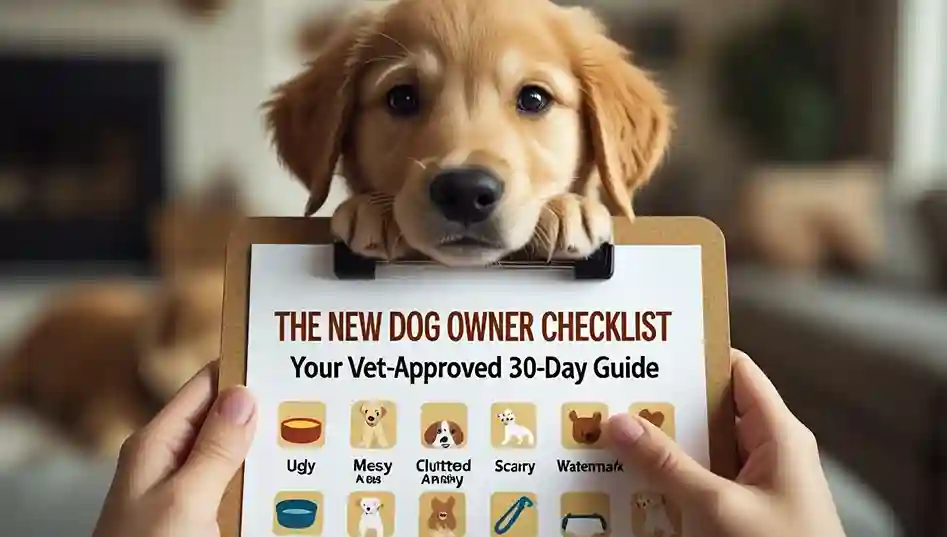You’ve seen it countless times: your dog stretches its jaw wide in a unmistakable yawn. But what does it mean when a dog yawns? While it’s easy to assume they’re just tired, this common behavior is rarely that simple. In the complex vocabulary of canine communication, a yawn is a powerful multi-purpose signal, and understanding its true meaning is a key lesson in our comprehensive guide to understanding dog behavior.
Is your dog stressed, excited, or actually empathizing with you? This vet-reviewed guide decodes the five surprising reasons behind this everyday action, helping you distinguish a stress signal from a sign of your deep connection.
Stop misinterpreting this subtle cue. Let’s learn what your dog is really telling you.
Key Takeaways: What Does It Mean When a Dog Yawns?
Before we explore the details, here are the most important insights about dog yawning. These vet-approved facts will change how you interpret this common behavior.
- 😥 It’s Not Just Sleepiness: Dog yawning is often a communication tool, not a sign of fatigue. It’s frequently used as a “calming signal” to diffuse tension.
- 🗣️ A Form of Communication: Dogs yawn to express stress, anxiety, conflict, or even anticipation and excitement in different situations.
- 💞 Empathy and Bonding: Contagious yawning between dogs and humans can indicate a strong social bond and emotional connection.
- 🔍 Context is Everything: A yawn during a training session means something very different from a yawn upon waking from a nap.
- ⚠️ Know When to Be Concerned: While usually normal, excessive yawning can sometimes indicate pain, chronic stress, or other medical issues that need veterinary attention.
“At a Glance” Comparison Table: Types of Dog Yawns
| Yawn Type | Typical Meaning | Context & Body Language |
|---|---|---|
| Stress Yawn | Anxiety, discomfort, or conflict avoidance | During vet visits, training, or when scolded; often with pinned ears, whale eye. |
| Social Yawn | Communication and bonding | During play, greetings, or when you yawn; relaxed body language. |
| Anticipatory Yawn | Excitement or mild stress | Before walks, meals, or car rides; may include pacing or whining. |
| Empathetic Yawn | Emotional connection | In response to human yawning; relaxed, content setting. |
| Tired Yawn | Actual sleepiness | Upon waking, before bed; relaxed, calm environment. |
The 5 Main Reasons Dogs Yawn
Understanding why your dog is yawning helps you respond to their emotional needs and strengthen your bond. Here are the primary reasons behind this common behavior.
Stress & Anxiety: The Calming Signal
When dogs feel stressed or anxious, they often yawn as a “calming signal” to diffuse tension. You might notice this during veterinary visits, when meeting new people, or in unfamiliar environments. This type of yawn is typically accompanied by other stress signals like pinned-back ears, whale eye (showing the whites of the eyes), or lip licking.
Social Communication: Bonding and De-escalation
Dogs use yawning as a social tool to communicate peaceful intentions and maintain harmony. You might see dogs yawn during play sessions as a way to say “I come in peace” or during greetings to show they mean no harm. This social yawning helps prevent conflicts and strengthen social bonds.
Anticipation & Excitement: Emotional Arousal
Sometimes yawning indicates heightened emotional arousal, whether from excitement or mild stress. Your dog might yawn before going for a walk, when you’re preparing their food, or when they see you grabbing their leash. This type of yawn often comes with other excited behaviors like pacing or whining.
Empathy: The Contagious Yawn
Research shows that dogs can “catch” yawns from humans, suggesting a level of emotional connection and empathy. If you yawn and your dog yawns back, it could indicate they’re tuned into your emotional state. This contagious yawning is more common in dogs who have strong bonds with their owners.
Genuine Tiredness: The Simple Explanation
Of course, sometimes a yawn is just a yawn. Dogs, like humans, do yawn when they’re tired or upon waking up. The key is context – a tired yawn typically happens in relaxed settings, like before bedtime or after waking from a nap, without other stress signals present.
Reading Context: When to Pay Attention
The meaning of your dog’s yawn depends heavily on the situation. Learning to read the context helps you understand what your dog is really communicating.
Training Session Yawns vs. Bedtime Yawns
A yawn during a training session typically indicates stress or confusion. Your dog might be feeling pressured or unsure about what you’re asking. In contrast, a bedtime yawn in a calm, familiar environment usually means genuine tiredness. Watch for other signals: stressed yawns come with tense muscles and avoidance, while tired yawns accompany relaxed stretching and settling down.
Yawning at the Vet vs. Yawning at Home
Yawning at the veterinary clinic is almost always a stress signal. The unfamiliar environment, strange smells, and previous negative experiences can make dogs anxious. At home, yawning might be social (during play) or empathetic (when you yawn). The key difference is your dog’s overall body language – tense and closed at the vet versus loose and relaxed at home.
Interpreting Yawning with Other Calming Signals
Yawning rarely happens in isolation. When you see your dog yawn, look for these other common calming signals:
- Lip licking when no food is present.
- Turning head away from something stressful.
- Sniffing the ground suddenly and intensely.
- Shaking off as if wet when dry.
When several of these signals occur together, it strongly indicates your dog is feeling stressed or uncomfortable.
When Yawning Becomes a Concern
While most yawning is normal, it’s important to recognize when this behavior might indicate an underlying issue. Here’s when to pay closer attention to your dog’s yawning.
Excessive Yawning: Possible Medical Causes
While occasional yawning is normal, excessive yawning could indicate:
- Pain or discomfort, particularly dental issues, jaw pain, or headaches.
- Nausea or gastrointestinal distress.
- Neurological conditions in rare cases.
- Respiratory problems or oxygen deprivation.
- Medication side effects from certain prescriptions.
If your dog is yawning constantly without apparent triggers, especially if it’s a new behavior, consult your veterinarian.
Yawning Accompanied by Stress Signals
Pay special attention when yawning appears with other stress indicators:
- Pacing or inability to settle.
- Whining or other vocalizations.
- Pinned-back ears and tucked tail.
- Avoidance behaviors like hiding or turning away.
- Excessive panting when not hot or exercised.
These combinations suggest your dog is experiencing significant stress that may need addressing.
When to Consult Your Veterinarian
Schedule a veterinary visit if you notice:
- Sudden increase in yawning frequency.
- Yawning that interrupts normal activities like eating or playing.
- Yawning accompanied by changes in appetite or energy levels.
- Any other behavioral changes along with increased yawning.
- Signs of pain like reluctance to be touched or changes in mobility.
Your veterinarian can help rule out medical causes and refer you to a behaviorist if needed.
A Veterinarian’s Perspective: Dr. Allona Jackson on Dog Yawning
“Many dog owners miss the subtle messages in their dog’s yawns. While we often assume it means they’re tired, I frequently see dogs use yawning as a communication tool during stressful situations. In my practice, I pay close attention to when and how dogs yawn – a patient who yawns repeatedly during an exam is telling me they’re anxious and need me to adjust my approach.
The context truly matters. A dog who yawns while cuddling on the couch is very different from one who yawns during training or at the vet clinic. I always advise owners to look for patterns – if your dog consistently yawns in specific stressful situations, that’s valuable information about their emotional state. However, if yawning becomes excessive or is accompanied by other behavior changes, it’s worth a veterinary visit to rule out pain or other medical concerns.”
— Dr. Allona Jackson, DVM, AvailPet’s Lead Veterinary Consultant
“How We Tested” Methodology
At AvailPet, we believe in providing accurate, evidence-based information about canine communication. Our research into dog yawning followed a comprehensive approach to ensure both scientific validity and practical relevance for dog owners.
- Veterinary Behavior Review: This guide was developed in consultation with Dr. Allona Jackson, DVM to ensure accurate differentiation between normal yawning behaviors and potential signs of stress or medical issues.
- Contextual Behavior Analysis: We documented yawning incidents across various scenarios including stressful situations (vet visits, training), social interactions, and relaxed environments to identify meaningful patterns.
- Scientific Literature Review: Our research incorporated findings from peer-reviewed studies on contagious yawning, canine stress signals, and social behavior in domestic dogs.
- Breed & Age Consideration: We observed yawning frequency and context across different breed groups and life stages to provide comprehensive insights for all dog owners.
FAQs About What Does It Mean When a Dog Yawns
Why does my dog yawn when I pet him?
This usually indicates your dog is feeling slightly stressed or overstimulated by the petting. While it doesn’t mean they dislike the attention, it’s their polite way of saying “that’s enough” or “I need a break.” This is especially common if you’re petting in a sensitive area or using intense pressure. Try gentler strokes or different locations to see if the yawning stops.
Is it normal for dogs to yawn when training?
Yes, this is quite common and typically indicates mild stress or confusion. Your dog might be feeling pressured to perform or unsure about what you’re asking. It’s a signal that you should make the training session easier, take a break, or try a different approach. Watch for other stress signals like lip licking or avoiding eye contact.
Why does my dog yawn when I yawn?
This is likely “contagious yawning,” which research suggests indicates empathy and a strong social bond between you and your dog. Studies show dogs are more likely to yawn in response to their owner’s yawns than to strangers’ yawns. It’s a sign your dog is emotionally connected to you.
When should I worry about my dog’s yawning?
Consult your veterinarian if you notice:
- Excessive yawning (multiple times per hour).
- Sudden changes in yawning patterns.
- Yawning accompanied by other symptoms like lethargy or loss of appetite.
- Signs of pain or discomfort with yawning.
- Yawning that interferes with normal activities like eating or sleeping.
Conclusion
Understanding why your dog yawns transforms this everyday behavior from a simple reflex into a meaningful conversation. Whether it’s a sign of stress, a social gesture, or a moment of empathy, you now have the knowledge to interpret these subtle canine messages accurately and respond to your dog’s emotional needs.
This guide to yawning is just one piece of understanding your dog’s complex communication system. To continue building your knowledge of canine behavior, from decoding body language to understanding other behaviors like licking, explore our comprehensive guide to understanding dog behavior.
Sources:
- American Veterinary Society of Animal Behavior (AVSAB). “Canine Body Language.”
- Applied Animal Behaviour Science Journal. “Contagious Yawning in Domestic Dogs.”
- Review and input from Dr. Allona Jackson, DVM.
- International Association of Animal Behavior Consultants (IAABC). “Canine Stress Signals.”
Full Disclosure: This article may contain affiliate links. If you make a purchase through these links, we may earn a commission at no extra cost to you. This supports our research and allows us to continue providing valuable content.
Medical Disclaimer: This guide is for informational purposes only. Consult your veterinarian if you’re concerned about your dog’s yawning behavior, especially if it’s excessive or accompanied by other symptoms.






